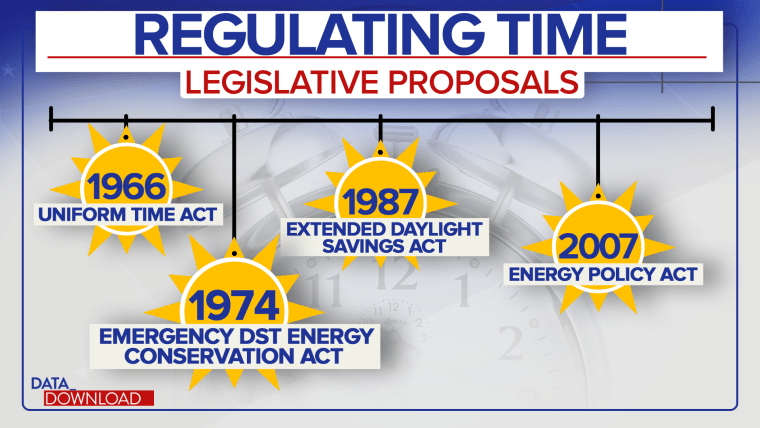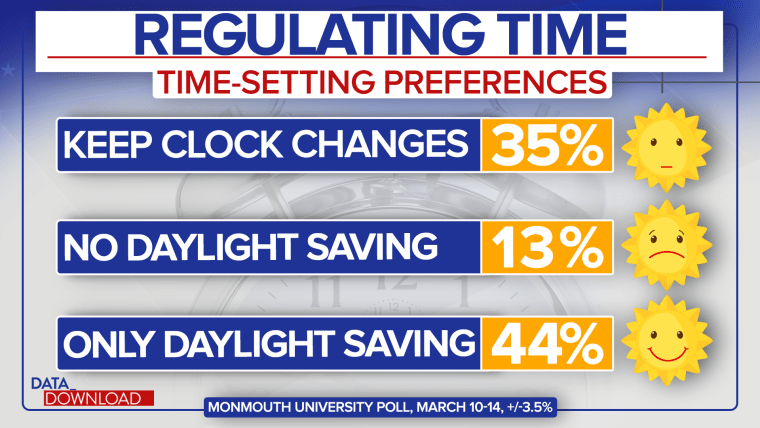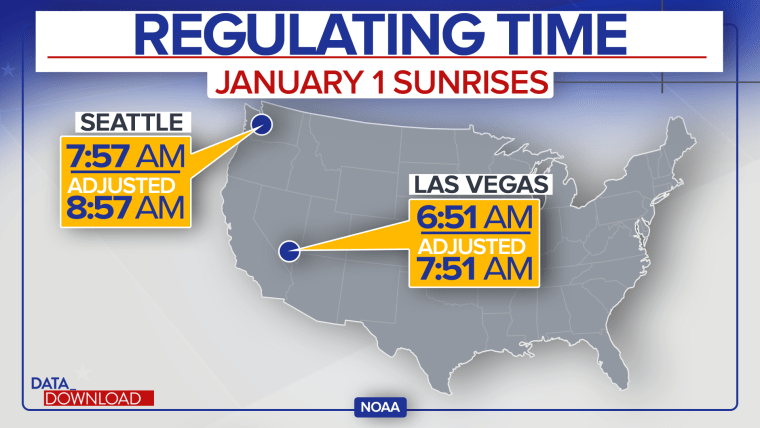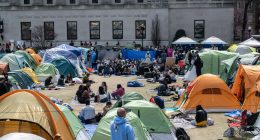WASHINGTON — This week the U.S. Senate showed it can still put aside partisan differences and unite for a common goal on some issues. The question at hand: Daylight Saving Time.
On Tuesday, the Senate unanimously agreed that it would like to make the annual rite of “springing ahead” by an hour a year-round practice. Now the nation’s clock-watchers wait to see what the House will do with the proposed “Sunshine Protection Act.”
Despite the proposal’s overwhelming support in the Senate, however, American opinions on permanent DST are far from uniform and some Americans are already casting shade on it.
This is not new territory for Washington. Over the past 60 years, there have been more than a few proposals regulating how the nation sets its clocks. Washington even passed an earlier law making DST “permanent.”

From the end of World War II into the 1960s, there were no national laws around Daylight Saving Time. States and entities within states followed their own rules. Local differences played havoc with transit and broadcasting schedules and in response, Washington enacted the Uniform Time Act in 1966. It created a formal schedule for DST with the nation “springing forward” the last Sunday in April and then “falling back” last Sunday in October.
In 1974, as the energy crisis was in full swing, the Emergency Day Light Saving Conservation Act took effect. It made Daylight Saving Time effective for the entire year (sound familiar?), for a two-year trial period. But Congress ended the experiment early when people complained about the darkness of winter mornings — particularly for schoolchildren — and returned to the old schedule.
In 1987, Washington moved DST to cover the period from the first Sunday in April (rather than the last) to the first Sunday in November (rather than the last Sunday in October) — extending DST for about five weeks.
And finally, in 2007 Washington bumped the days we switch the clocks to where we are now, springing forward on the second Sunday on March and falling back the first Sunday in November.
That’s a lot of clock tampering. And, for the most part, the movement has been toward codifying and extending DST, except when the public revolted in the 1970s. If the House passes the Senate bill and President Joe Biden signs it into law, would the reaction be different this time? There are reasons to be skeptical.
Some people prefer an early sunrise, while others prefer a late sunset. Monmouth University released a poll early this week showing a divided public.

On the whole, a plurality, 44 percent, favored moving the clock ahead for the entire year. But 35 percent wanted to keep the clock changes as they currently are, and another 13 percent wanted to do away with DST and basically use “standard time” all year-round.
So, doing the math, slightly more people would rather not have the bill approved by the Senate this week.
And when you add in the latitude of where respondents live, the numbers shift a bit. People who live above the 42nd parallel (which, for reference, makes up most of the border between New York and Pennsylvania) are slightly more likely to want to keep DST the way it is.
One reason might be that daylight is a scarce commodity in those northern communities during the winter. On Jan. 1 of this year, for instance, Miami had about 10.5 hours of daylight. Boston had about nine. No matter what you do with clocks, you can’t change the tilt of the earth’s axis. And if you live in the north there may be more of a focus on maximizing daylight.
And beyond the differences between the north and south, there are important east-west variances. Time zones can be big unwieldy things and sunrise and sunset can look very different on their edges.
Consider some major cities and how the shift to permanent DST would affect them in the middle of winter.

On Jan. 1 of this year, the sun rose in Las Vegas at 6:51 a.m., but in Seattle, on the western edge of the country and the Pacific Time Zone, the sun rose more than an hour later at 7:57. With permanent DST, the sun wouldn’t rise in Seattle that day until almost 9 a.m.
In the Central Time Zone, the sun rose in Chicago at 7:18 a.m. Further west, in Minneapolis, it rose more than a half-hour later. With permanent DST, it wouldn’t rise in the Twin Cities until, again, almost 9 a.m.
And in the big, broad Eastern Time Zone, the differences are even more noticeable. Consider Boston and Detroit, which are both just north of the 42nd parallel. On Jan. 1, in Boston this year, the sun rose at 7:13 a.m., but in Detroit it rose at 8:01. That means, with permanent DST, the Motor City would not see the sun on Jan. 1 until after 9 a.m.
Those late sun-ups raise questions about the safety of kids going to school in the morning, walking or standing at bus stops (a concern when the nation first tried permanent DST), and they mean that cities on the western edges of time zones are probably going to be looking at morning rush hours in the dark.
So, yes, in a political world where gridlock is the norm, it’s nice to see the Senate come together on anything, particularly unanimously. But the United States is a big country and in reality, there are big swaths of the nation where the “Sunlight Protection Act” might just as well be called the “Rising in Darkness Act.”
Source: | This article originally belongs to Nbcnews.com









